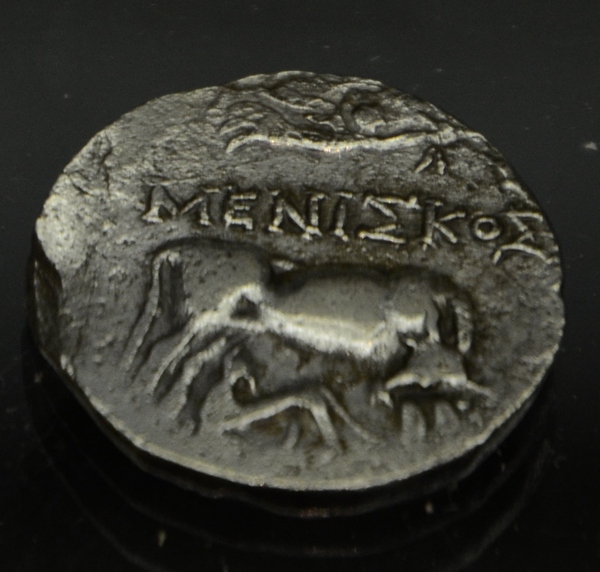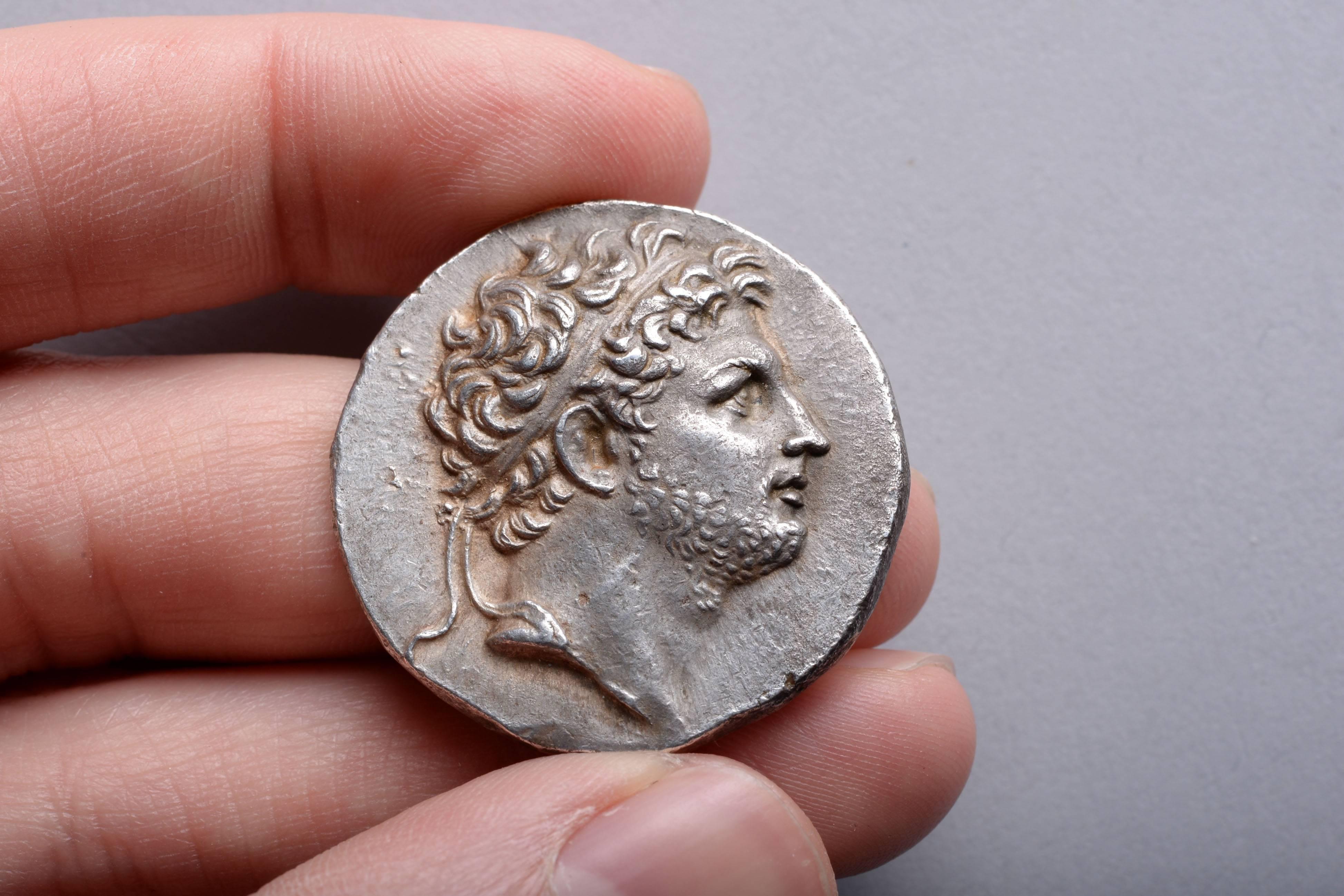
The coin type lent an element of political and economic reliability to the ruler and facilitated the hiring of mercenary forces, who had long been accustomed to receiving pay in coins of this type. Further, this particular representation of Heracles was especially popular among rulers striving to assert their claims to the throne, including usurpers, because of its familiarity. The portrait's popularity can be attributed to the hero's own associations with royal authority, his widespread appeal, and his ability to blend with the regional and local traditions of Hellenistic subjects within and outside of the Greek world. This article argues for the symbolic and economic value of Heracles' portrait in its own right. Though this coin type is often interpreted as serving legitimizing purposes by connecting Hellenistic rulers to Alexander the Great, who popularized this type, such explanations are problematic for understanding the portrait's appearance in places like Sparta and Carthage, who had less to gain from evoking the memory of Alexander.
#Hellenistic coinage skin#
― Paul Cartledge most usefully, in a work that aims to inspire further investigation among sixth formers, undergraduates and interested general readers, there is an eclectic range of books and articles cited as further reading for each chapter.The portrait of a young Heracles wearing the lion skin was a familiar sight on Hellenistic coins. ― Lucia Marchini, Minerva Peter Thonemann's introduction to arguably one of the most fascinating of all epochs of human history may be very short but it is also very brilliant: wide-ranging, sharply focused, and deeply illuminating.
#Hellenistic coinage full#
― Carol Atack, Times Literary Supplement Pocket-sized, highly engaging and packed full of varied and fascinating information the perfect introduction to an enthralling era. ― Carol Atack, Times Literary Supplement In displaying his enthusiasm for the diversity of the Hellenistic world and the achievements funded by its monarchies, Thonemann rightly underlines the brutality of conflicts that spread far beyond the Mediterranean. The successive victories of Rome over Macedon at. ― Mark Thorne, The Classical Journal A beautiful little jewel ― Greece & Rome Peter Thonemann's short, straightforward, but sharply written introductory volume, The Hellenistic Age, exemplifies a different trend, a miniature encapsulation of a complex world. LATER HELLENISTIC COINAGE The last two centuries of Hellenistic coinage evolved in the shadow of Rome. Champion, The American Historical Review Review from previous edition Those looking to find a concise and stimulating introduction to the Hellenistic world need look no further than this excellent pocket-sized volume. I can think of no higher praise than that for a book of this type. an up-to-date introduction to Hellenistic gold, silver and bronze coins in. The reign of Alexander the Great provides a valuable case study of the powerful. Coinage is one of our key sources for the rich and fascinating history of the. It also contains some of the most beautiful and finely struck examples of Greek royal coinage. Having worked on the history and historiography of the Hellenistic world and Middle Roman Republic for over twenty-five years, I gained a firmer synoptic grasp of my subject from reading this book. The Barber Institute collection of Hellenistic coins is small but contains some fine specimens of early Greek coins, the earliest examples of ancient western coinage.

Our expert authors combine facts, analysis, perspective, new ideas, and enthusiasm to make interesting and challenging topics highly readable. These pocket-sized books are the perfect way to get ahead in a new subject quickly.
#Hellenistic coinage series#
Drawing on inscriptions, papyri, coinage, poetry, art, and archaeology, in this Very Short Introduction Peter Thonemann opens up the history and culture of the vast Hellenistic world, from the death of Alexander the Great (323 BC) to the Roman conquest of the Ptolemaic kingdom (30 BC).ABOUT THE SERIES: The Very Short Introductions series from Oxford University Press contains hundreds of titles in almost every subject area. The scientists of Ptolemaic Alexandria measured the circumference of the earth, while pioneering Greek argonauts explored the Indian Ocean and the Atlantic coast of Africa. Kings from Sicily to Tajikistan struggled to meet the challenges of ruling multi-ethnic states, and Greek city-states came together under the earliest federal governments known to history. A Celt from the lower Danube could serve in the mercenary army of a Macedonian king ruling in Egypt, and a Greek philosopher from Cyprus could compare the religions of the Brahmins and the Jews on the basis of first-hand knowledge of both. This was an age of cultural globalization: in the third century BC, a single language carried you from the Rhône to the Indus.

The three centuries which followed the conquests of Alexander are perhaps the most thrilling of all periods of ancient history.



 0 kommentar(er)
0 kommentar(er)
